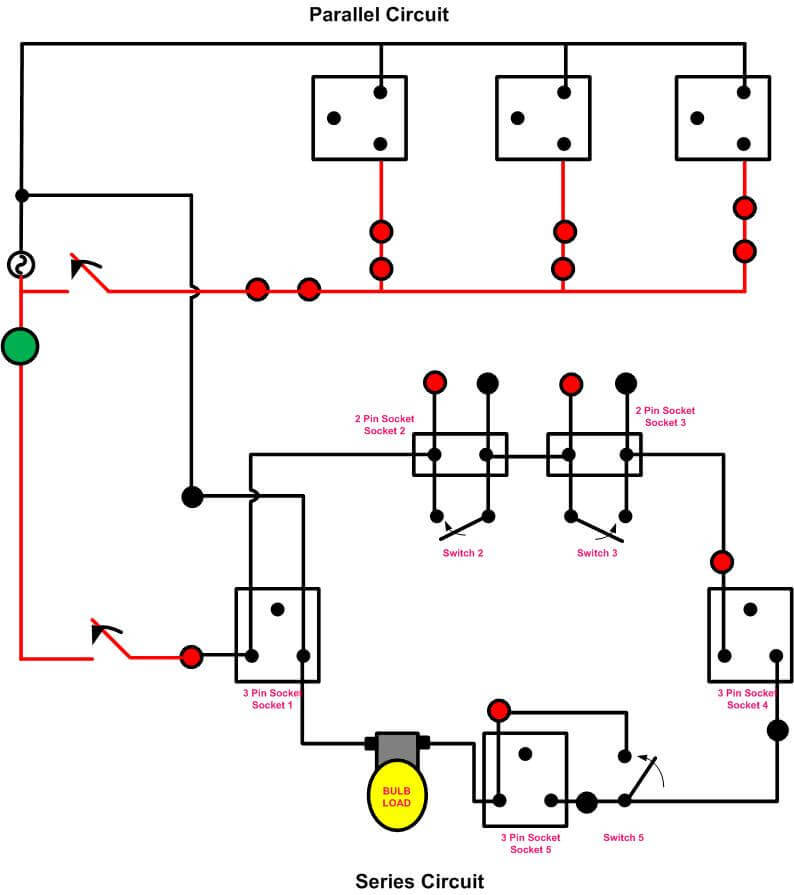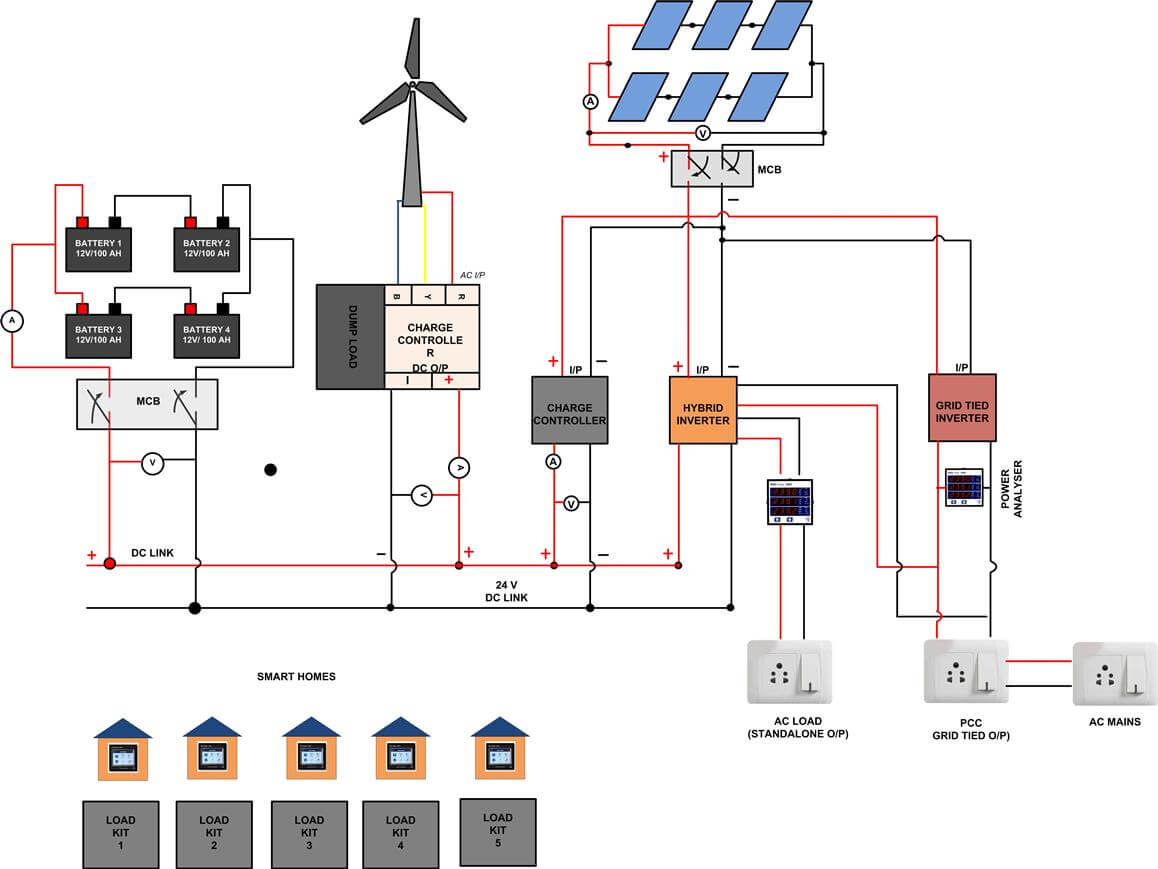Ecosense installed RE Based Smart Energy Management System at Madhav Institute of Technology and Science, Gwalior.
RE Based Smart Energy Management System utilises 2 of the most popular Renewable energy sources that are Wind energy and Solar energy for renewable electricity production. This system is focussed to make users learn about different ways of electricity production using renewable energy sources. Renewable energy systems can be categorised into three different categories.
1. Standalone systems:
A standalone renewable energy system is capable of generating electricity by itself and does not depend on any external source of electricity. The advantage of these systems are they can be remotely installed where no other source of electricity is available. With this big advantage there also comes a disadvantage that if the system is not in use and the loads are unable to consume the electricity produced by standalone systems, the power produced is wasted.
2. Grid Connected Systems
To resolve the disadvantage of standalone systems Grid connected systems are developed which transfers the extra unutilised power produced by the system to national grid. But as the name suggests these systems are grid depended systems and if due to any reason electrical grid fails, these systems are unable to produce electricity.
3. Hybrid Systems
Hybrid systems addresses the disadvantages of both Standalone and grid connected systems. It transfers unused power to battery and once battery is fully recharged, it transfers the unused power to the grid eliminating disadvantages of both standalone and grid connected systems.
Ecosense’s RE based Smart Energy Management system enables a user to control the evacuation of energy produced via any of the above discussed methodologies. Our system can be sub-divided into the following units:
a) Renewable Energy Sources (Power Generation Unit)
We have used two of the most popular Renewable energy sources a 1kW Wind Turbine and a 2kW Solar PV.a
b) Weather Station
Weather Station unit includes a pyranometer to measure solar irradiation, a humidity and temperature sensor to measure ambient humidity and temperature and a Wind speed and wind direction sensor to measure speed and direction of wind. This weather station gives an accurate ambient weather data of installed location. A user will be able to see and program the upper and lower limits of weather data to ensure safety of the renewable sources and power evacuation units.
c) Power evacuation units (includes Standalone, Grid connected and Hybrid Systems)
As explained above these systems are used to extract the generated power using any of the three systems. A user can select to operate the systems using any of the method and evaluate the most efficient system for his/her location.
d) Central Control Unit
The central control unit allows a user to connect/disconnect any of the power evacuation mode and control the overall functioning of the system. The central control unit comes with a software setup to control the system manually or remotely whichever way is preferred by user.
e) Load Unit (includes Smart Homes and Load Analysis Kit)
Load units include Smart homes and Load Analysis kit.
Our Smart House is a miniaturized model of a Smart home which operates on conventional AC power supply. It has a relay-based operation which can be operated using c-RIO connected with PC. There are two AC supplies given with the smart home which get activated when relay of that particular Smart House is activated from c-RIO. User can plug in any kind of load to those supplies or user can plug Load analysis kit there. A multifunction touch screen panel meter is connected to each of the Smart Houses which measures all the electrical parameters of the connected load and also displays current and voltage waveforms. All these data can also be viewed in the provided software using RS485 protocol.
Load Analysis Kit:
Generally, in any home loads are connected in parallel to the AC Mains because in parallel circuit voltage remains same and current is different as drawn by the load but in contradiction to that if loads are connected in series, same current will flow throughout the circuit and every load will have different voltage. This load analysis kit demonstrates the same.
Utility of System:
This system can be utilized by the user to perform the following experiments:
1. Setup a solar pv standalone system and calculate power in different branches of the system
a) calculate efficiency of charge controller and inverter
b) calculate charge controller efficiency at different loading conditions
c) calculate inverter efficiency at different loading condition of inverter.
2. Setup a solar pv grid connected system and calculate power in different branches of the system
3. Setup a solar pv power plant with the help of hybrid inverter.
4. Setup a wind energy standalone system and calculate power in different branches of the system
5. Setup solar pv-wind hybrid standalone system and calculate power in different branches of the system.
6. Comparing the different types of grid connected systems and analyzing their waveforms with the help of nonlinear loads
7. Utilizing smart house as a load and analyzing load waveforms.
8. Utilizing load analysis kit and understanding series and parallel circuits.
Masters Training Conducted
Ecosense also conducted a masters training program at MITS. This Masters training program was focused on educating and training the professors, scholars and technicians in Renewable Energy Technology who will further train thousands of students and professionals to start their career or business in this very field.
Program Outcomes
The faculty members and students really enjoyed our two-day training programme and loved to work on our lab equipment. Professors will conduct experiments on the system to understand it more deeply and incorporate this lab set up as part of their regular curriculum.




